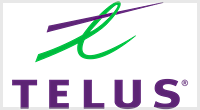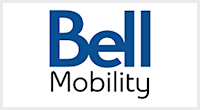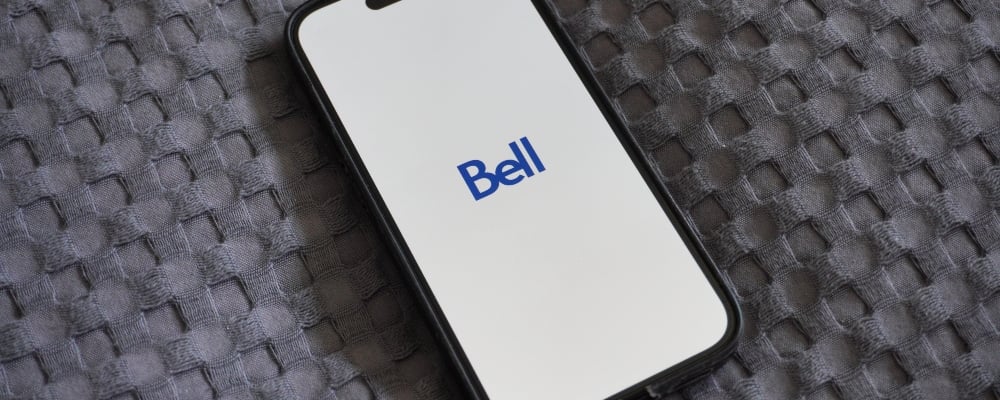
For the longest time, I've been a Rogers customer, constantly wondering what it's like on the other side of the fence. And while I’m super happy with my Rogers plan, I’ve been curious about whether Bell—arguably Rogers’ biggest telcom competitor—is worth a serious look.
I spent a full month using Bell’s Elite 250 plan, primarily testing its 5G connectivity in the heart of Toronto while also seeing how it stacked up in smaller, rural areas in Southern Ontario. I aimed to really put Bell through its paces, seeing if its coverage, speeds, and price were truly worth it for my lifestyle. The more I acclimated to the carrier's services and perks, I found myself seeing some genuine value from Bell. For the first time, my eyes are open to how fast Bell's network actually is, and I feel confident in suggesting Bell to hopeful customers, primarily thanks to its data speeds and reliability.
How I tested Bell
Over the past month, I began testing Bell's Elite 250 plan on a BYOD month-to-month term. Throughout the month, I put a lot of emphasis on seeing how fast Bell's 5G speeds are, considering the carrier has some of the best coverage in the country (just under Telus). With this in mind, I wanted to identify how Bell's signals fared in the concrete jungle of Toronto, in the subway tunnels, and out in the rural plains of Southern Ontario.
It was also important for me to experience how Bell's network impacted my workflow when outside of my home office. As someone who requires dependable coverage to upload files, access emails, and post social content, I tested Bell's ongoing reliability.
How I Tested Bell
My testing included:
- Sending text messages while in the downtown core of Toronto
- Travelling west to more rural areas of Ontario, monitoring call and data quality
- Spending time on video calls across FaceTime, Zoom, and Discord
- Streaming content across Spotify, Netflix, Prime Video, and YouTube
- Playing games via Xbox Cloud Gaming on iPhone 16
- Using my smartphone as a hotspot for my laptop at coffee shop
- Downloading and uploading video files to Google Drive and Dropbox
- Testing Bell's customer service chat functions and
- Managing MyBell app on iOS
The bottom line
As many Canadians can attest, Bell's mobile services are among the best in the country. There's a reason the company is so highly regarded for its coverage and network reliability. The 5G connectivity never failed me when travelling throughout Toronto. I was able to make clear phone calls on the streets and even within the subway tunnels of the TTC.
Working out of a coffee shop periodically, I found myself with ample data. The 250GB data allotment allowed me to routinely download and upload files to Google Drive. I also found myself with enough 5G data to spare to play games over the cloud, and a surprising factor was how well the MyBell app works for account management and bill payments.
That all being said, Bell's Elite 250 lives up to the name, at a pricey $105. However, when looking at the Big Three in Canada, that price tag is par for the course.
Bell plans and pricing
As with all Canadian carriers, Bell offers a handful of plan options, with a range of data buckets to choose from. As with its competitors, Bell allows new customers to sign up for either a BYOD month-to-month plan or a 2-year device financing option. All of Bell's plans include 5G+ network access, unlimited calling, texting and data in Canada, unlimited international texting, and hotspot support.
The higher-priced plans offer some additional benefits and perks. For instance, the Elite 175 adds unlimited calling and texting to the US, while the Elite 250 includes the same benefits to Mexico. The Elite 250 plan is the only one to offer HD video streaming, leaving the others limited to SD. Additionally, the highest monthly-tiered plans include a Crave Basic subscription.
Here are Bell’s current mobile plan options:
Bell unlimited plan options
| Plan | Premium data | High-speed hotspot | Price | Shop plan |
|---|---|---|---|---|
| Elite 100 | 5 100GB |
3.5 Up to 1.7Gbps |
1 BYOD: $80/mo.
2-year plan: $85/mo. |
View Plan |
| Elite 175 |
4.5 175GB |
2 Up to 1.7Gbps |
2.5 BYOD:
$90/mo.
2-year plan: $95/mo. |
View Plan |
| Elite 250 | 4 250GB | 2.5 Up to 1.7Gbps |
4 BYOD: $105/mo.
2-year plan: $110/mo. |
View Plan |
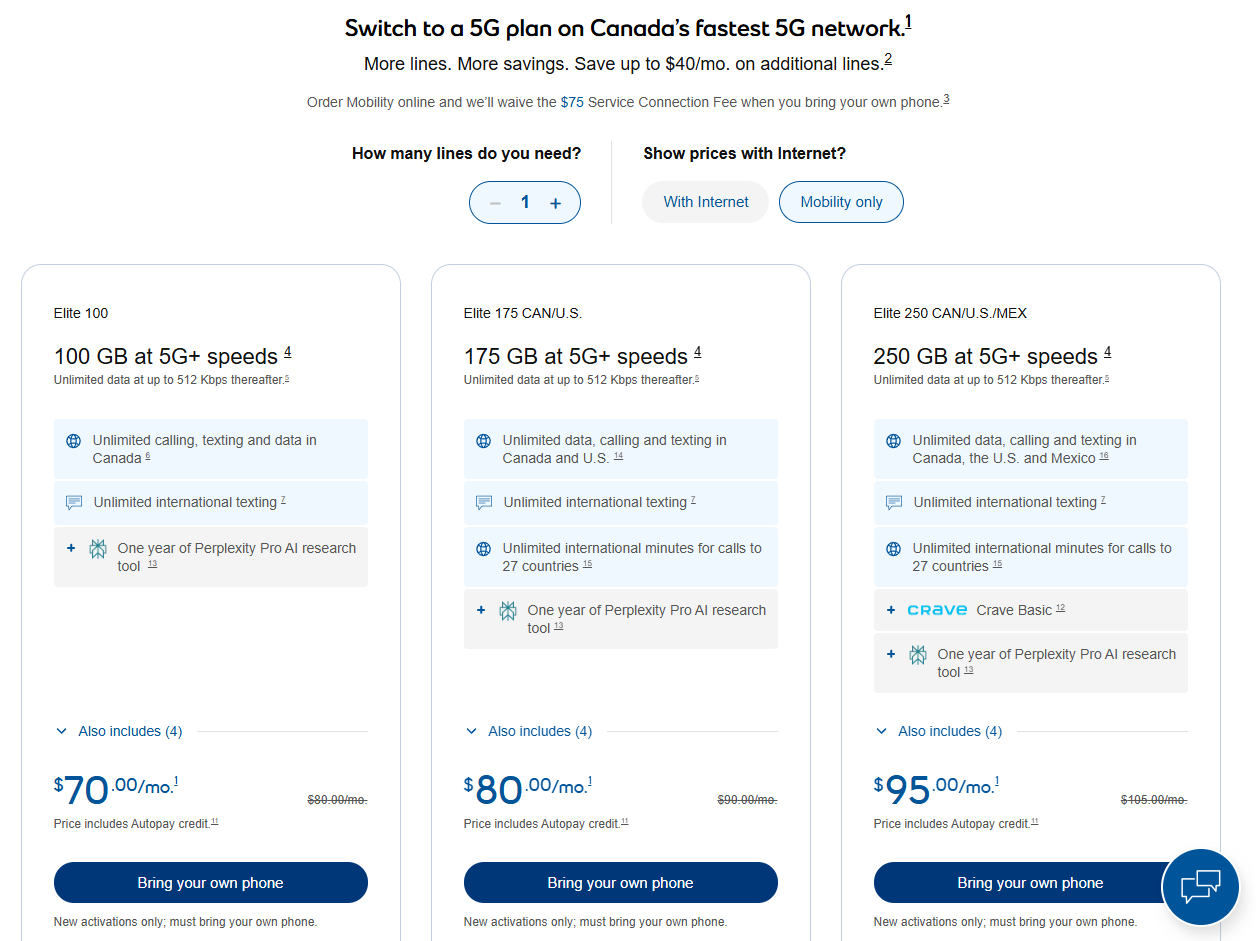
Image: Bell
Bell family plans
Bell offers the ability to add additional lines to your account, with monthly credits given for each additional line. As expected, you can mix and match plan tiers amongst your account, based on the needs of each member on the account.
Here's a breakdown of how Bell's additional lines work when activating a new line.
- Activate your first line based on your personal data and usage needs.
- Add a second line with monthly credits on your chosen plan.
- Continue adding lines as each comes at a discounted rate to help you save more.
Below are listed prices of additional lines on Bell’s BYOD plans after applying the monthly credit.
| Plan | First line | 2nd line | 3rd line | 4th line+ | Total for four lines |
|---|---|---|---|---|---|
| Elite 100 | $80/mo | $62/mo | $55/mo | $48/mo | $180/mo |
| Elite 175 | $90/mo | $72/mo | $65/mo | $58/mo | $220/mo |
| Elite 250 | $105/mo | $87/mo | $80/mo | $73/mo | $345/mo |
No matter the plan, Bell offers a $15/month credit on a second line. A third line gets a $25/month credit, which increases to $35/month on four lines or more. Primary lines are not eligible for any monthly credits, no matter the number of lines added to the plan.
An additional benefit Bell offers is the ability to mix and match plans to each line of a family plan. If, for example, two people on an account need ample data and unlimited calling to the US, they may both opt for an Elite 250 plan. But perhaps the third line on the account is for a child that doesn’t need all of the bells and whistles of the premium Elite 250; instead, that line can sign up for the Elite 100 plan.
Here's how the costs of the above family plan example would shake out:
- Line 1 (Elite 250): $105/mo
- Line 2 (Elite 250): $87/mo
- Line 3 (Elite 100): $55/mo
- Monthly total: $247/mo
Bell, sadly, has very limited options curated for teens and kids. The Elite 100 plan is more or less the go-to option. If your primary concern is staying in touch with your child, there's a budget-friendly Talk and Text plan that includes no data.
How I rated Bell
WhistleOut's criteria span five key metrics, including price, value, speed, coverage, and customer service. Each is rated out of five stars. The average is then used to form the carrier’s overall score.
Here's a breakdown of Bell's ratings across various metrics:
- Price: 3 out of 5
- Value: 4 out of 5
- Data speeds: 5 out of 5
- Coverage and network reliability: 5 out of 5
- Customer service: 3.5 out of 5

Overall, I'm quite impressed by Bell's speeds and network coverage from my testing.
Price
Comparing Bell's prices within the Canadian market, the carrier is one of the more expensive options available. Much like Telus and Rogers, what you're paying for is broad-spanning 5G coverage, a reliable network, and a significant monthly data pool. The $105 price of the Elite 250 plan is within the market standard of Bell's main competition. However, Bell's 5G+ plan is $5/month higher than a comparable plan with Rogers and Telus.
However, keep in mind that Bell's Canada-wide coverage is regarded as the 'Fastest Mobile Provider', according to a recent Ookla report. The carrier has been recognized as having the fastest 5G network amongst its competition, with upwards of 237.59Mbps download speeds in some metro cities. Bell also includes a subscription to Crave Basic, whereas Rogers throws in a Sportsnet+ subscription for only three months on certain plans.Score: 3 out of 5
Value
Bell's 5G+ network is a reliable option on the Canadian market, providing fast data speeds for browsing, checking in on emails, and viewing content on Instagram or TikTok. The Elite 250 plan includes Canadian-wide talk and text as well as international service to the US and Mexico. Bell also provides standard perks like hotspot support with speeds of up to 1.7Gbps, call display, and HD video streaming. The Elite 250 plan also includes a Crave Basic subscription, which on its own costs $9.99/mo.
Score: 4 out of 5
Data speeds
Throughout the past month, testing Bell's data speeds took a lot of time, as testing the connectivity under various circumstances and environments was at the top of my list. In theory, Bell's network supports download speeds of up to 1.7Gbps. However, it's very unlikely that you'll commonly access those speeds. In reality, if you're living in a major metro city under Bell's 5G+ coverage, you'll likely fall closer to the range of 200Mbps.
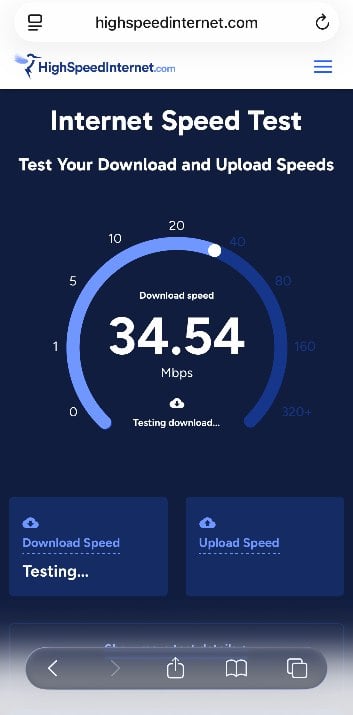
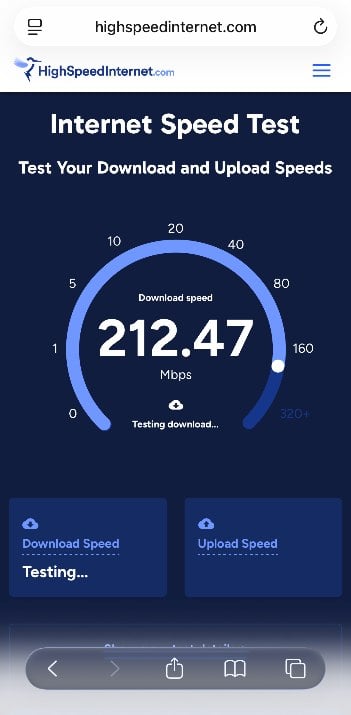
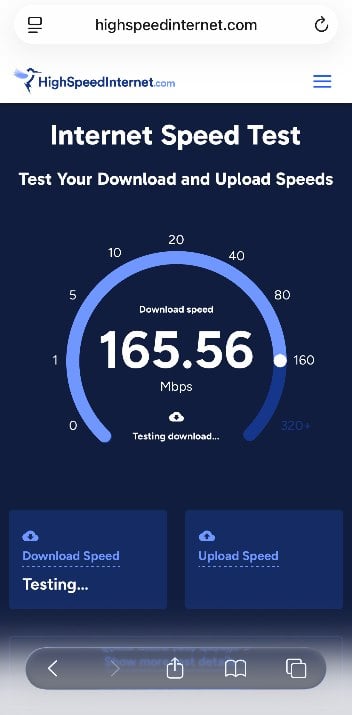
Image: Steve Vegvari | WhistleOut
I was able to reliably work from my nearby coffee shop, out on the patio, taking video calls, writing this very review, and scrolling through Instagram Reels. Even on the TTC, Bell's network was strong enough that I was able to tap into Xbox Cloud Gaming to load into Powerwash Simulator without any detrimental latency.
Score: 5 out of 5
Coverage and network reliability
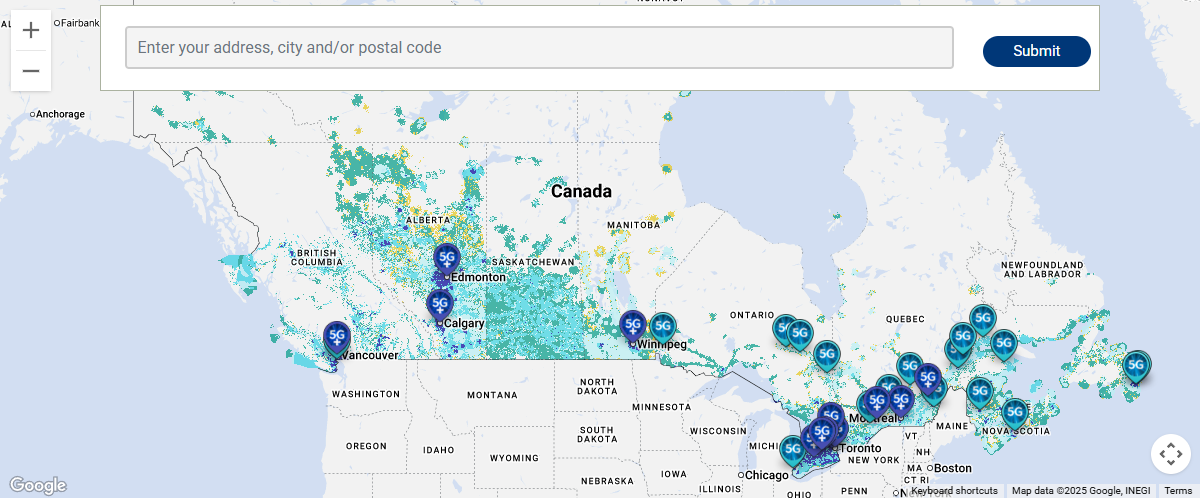
Image: Bell
Bell's Canadian-wide coverage map spans 5G+, 5G and 4G LTE primarily. Although Telus is widely considered to have more reliable coverage, Bell comes in at a close second. Bell shares its towers with Telus, leaving the two having near-identical network architecture. Bell's network is also supported by 99% of the Canadian population, from British Columbia all the way east to Newfoundland. However, 5G+ availability is limited, based on where you live. In Southern Ontario, 5G+ is accessible from Toronto to Mississauga and all the way west to London.
Bell's 4G LTE, on the other hand, is far more accessible from coast to coast. Heading east from Toronto, LTE coverage is more common, heading into Ottawa and Montreal. Out on the east coast and west coast, LTE and LTE Advanced coverage dominate and are more widely available. Due to my location, I found it fairly difficult to organically get onto Bell's 4G LTE signal. Which is a good thing for customers in Southern Ontario, in hindsight.Score: 5 out of 5
Customer service
Much like you, I’m sure, I never like contacting customer service. Whether it's Bell or any other carrier, the obtuse processBell's 5G coverage is available across major metro areas in Canada.l is no different than any other major company. In a test case of speaking to customer service to inquire about adding a secondary line to my account, I spent 15 minutes on hold, waiting for a representative.
Once I finally got in touch with a customer service rep, the experience was pretty good overall. I asked about my account’s current standing and the options I had to add an additional line. The representative was helpful, patient, and provided me with the costs and plan benefits that the second line would have once active. Of course, this was all done in the name of research, so I didn't get any further than asking questions. The representative was understanding that I wasn't ready to pull the trigger yet and told me that if I wanted, I could add a second BYOD line to my account straight from the MyBell app.
Score: 3.5 out of 5
Signing up with Bell
As a new customer, signing up with Bell was an effortless process. Navigating the carrier's website, I was able to first select my plan. Afterwards, the sign-up process included choosing between an eSIM, which was active within minutes, or having a SIM card shipped to me. Choosing the eSIM option, I had to input the IMEI of my device, confirm payment and account details, and in 15 minutes total, I was up and running.
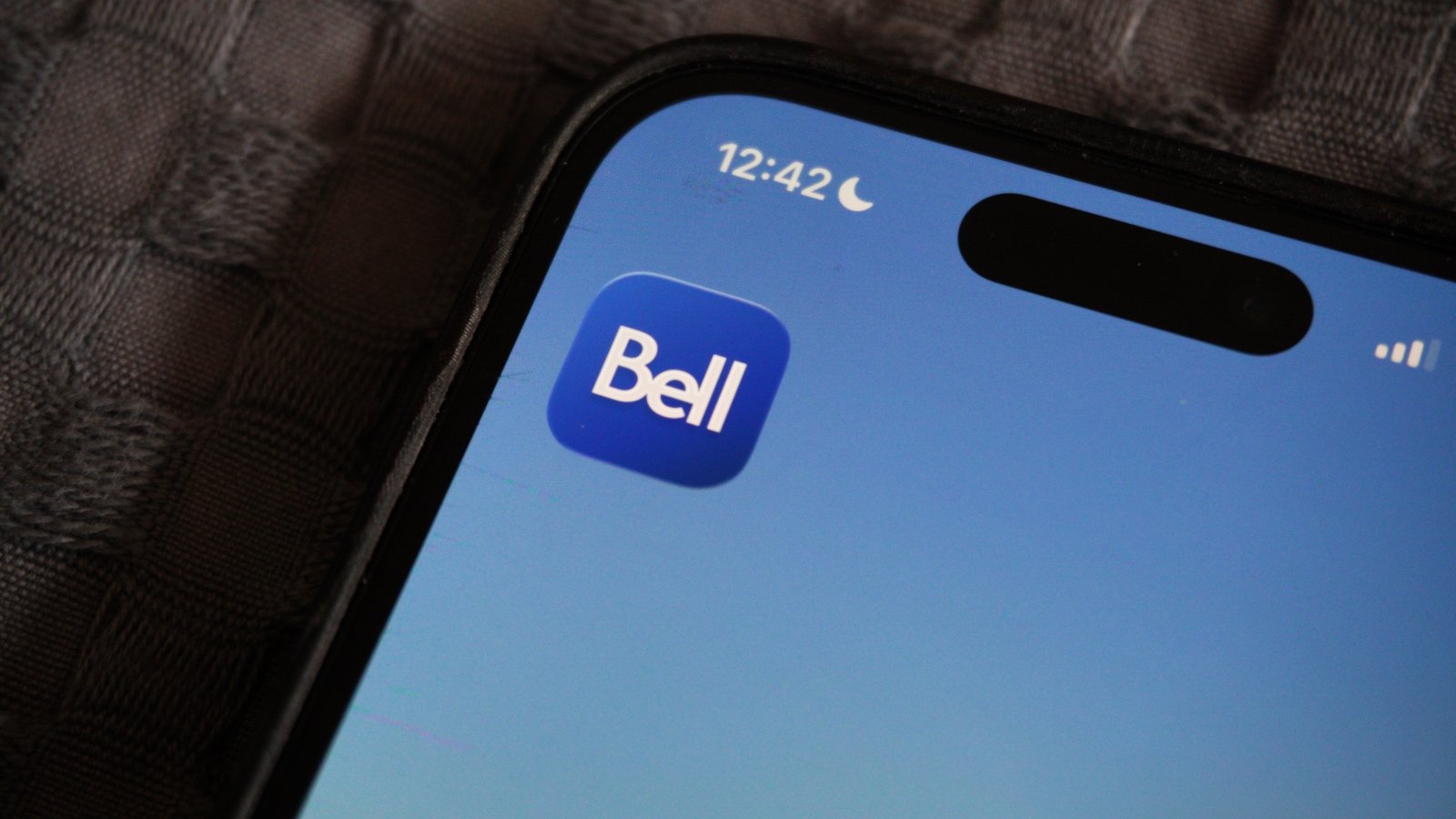
Image: Steve Vegvari | WhistleOut
For my test, I created a new phone number to make things easier on myself. If you are coming from a different carrier, you can have your existing phone number transferred to Bell. These transfer services also extend to transferring off a physical SIM card to an eSIM if you prefer.
Managing my plan
Bell offers the free MyBell app across iOS and Android that lets you manage your Bell phone plan and other services all in one convenient space. Within the MyBell app, I was able to continually monitor my data usage throughout the month. The app also gave options for adding a new line, activating an eSIM, as well as an easy-to-use bill payment method.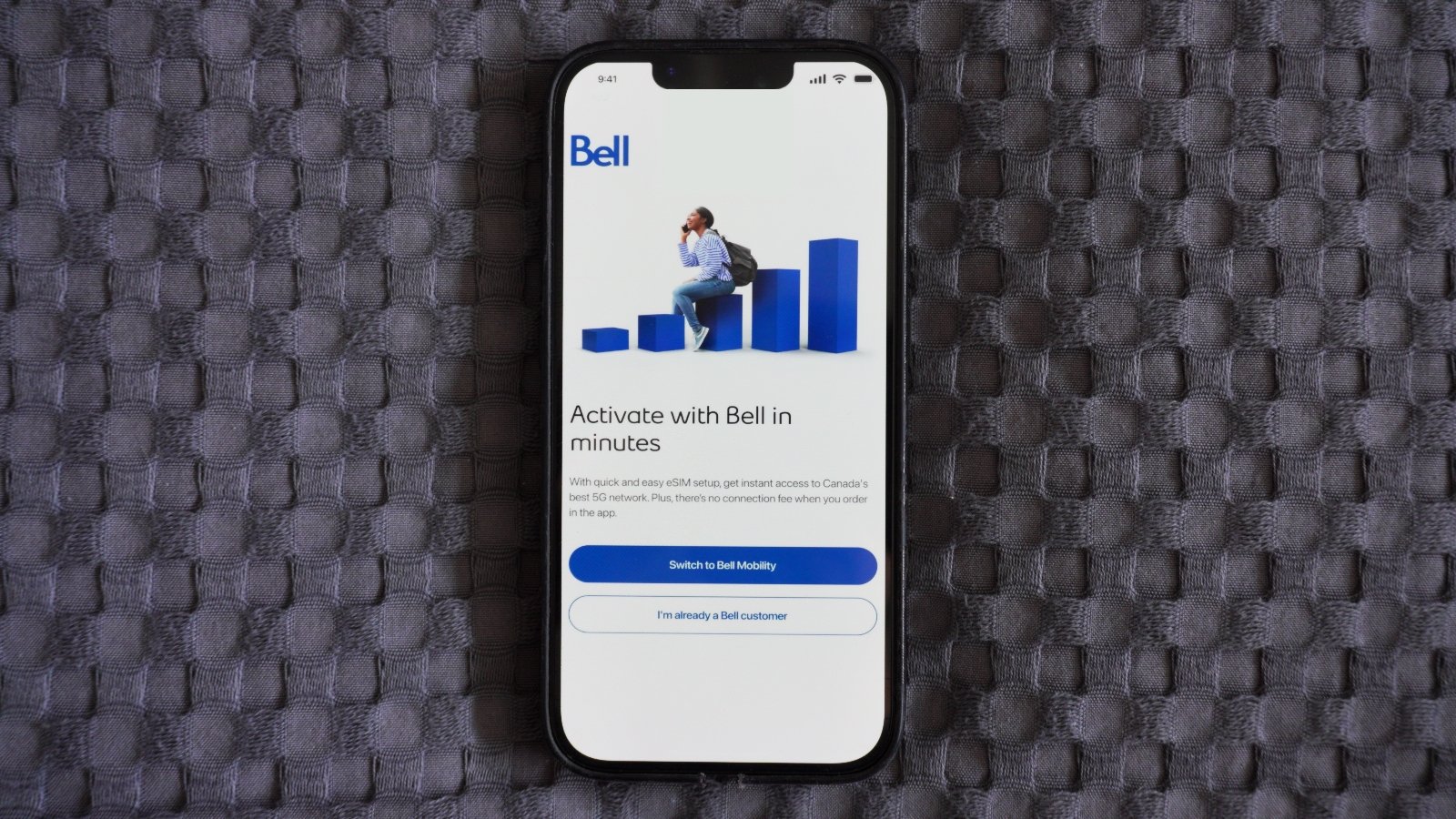
Image: Steve Vegvari | WhistleOut
You can also interact with Bell's customer service through the app. One of the major drawbacks to Bell's in-app customer service support is that it integrates AI and machine learning to help. In many cases, the AI-powered support methods aren't practical if I need to speak to a representative. However, I will admit that for simple troubleshooting, these means may not be all that bad.
Although many of these options exist through the MyBell web portal via a browser, I find it much more user-friendly and convenient to go through the app.
Am I satisfied with the Elite 250 plan?
Overall, the Elite 250 plan exceeded my expectations. Being a Rogers customer for so long, I've grown accustomed to adequate cellular coverage and data speeds. Having only been on Bell's network for a month, I'm already seeing the difference in download and upload speeds. The monthly 250GB is ample, giving me enough runway to stream content, work outside of a wifi connection, and upload data to the cloud.
Data allotment
Bell's Elite 250 plan offers customers 250GB of data each month. In most cases, 250GB is a large enough data bucket to allow you to get through a regular workflow throughout a month. If you commute to and from work, 250GB of data is enough to allow you to use Google Maps for traffic updates, stream your playlist on Spotify and still have enough data to regularly search for the best takeout restaurants on your ride home.
Bell's plans are technically "unlimited" options. Once you run out of your data bucket, you'll be automatically throttled to 512 Kbps speeds until the billing month rolls over to the next. 512 Kbps isn't great in the grand scheme of things. It'll only allow for light web browsing, messaging and emails. So, if you're a heavy data user like me, you may want to keep tabs on how much data you're using, especially if you're travelling a lot and are off of wi-fi.
Gaming and streaming
In most cases, cloud streaming services require 10Mbps download speeds, either over wi-fi or a carrier's data connections. In Bell's position, its 5G+ speeds are primed to support cloud gaming. Throughout my testing, I was able to play Powerwash Simulator and continue my nostalgic-fueled progress in Tony Hawk Pro Skater 3+4 using Xbox Cloud Gaming. I also found myself dabbling in Saints Row: The Third Remastered on Amazon Luna. My testing also included streaming episodes of Dexter Resurrection on Paramount+.
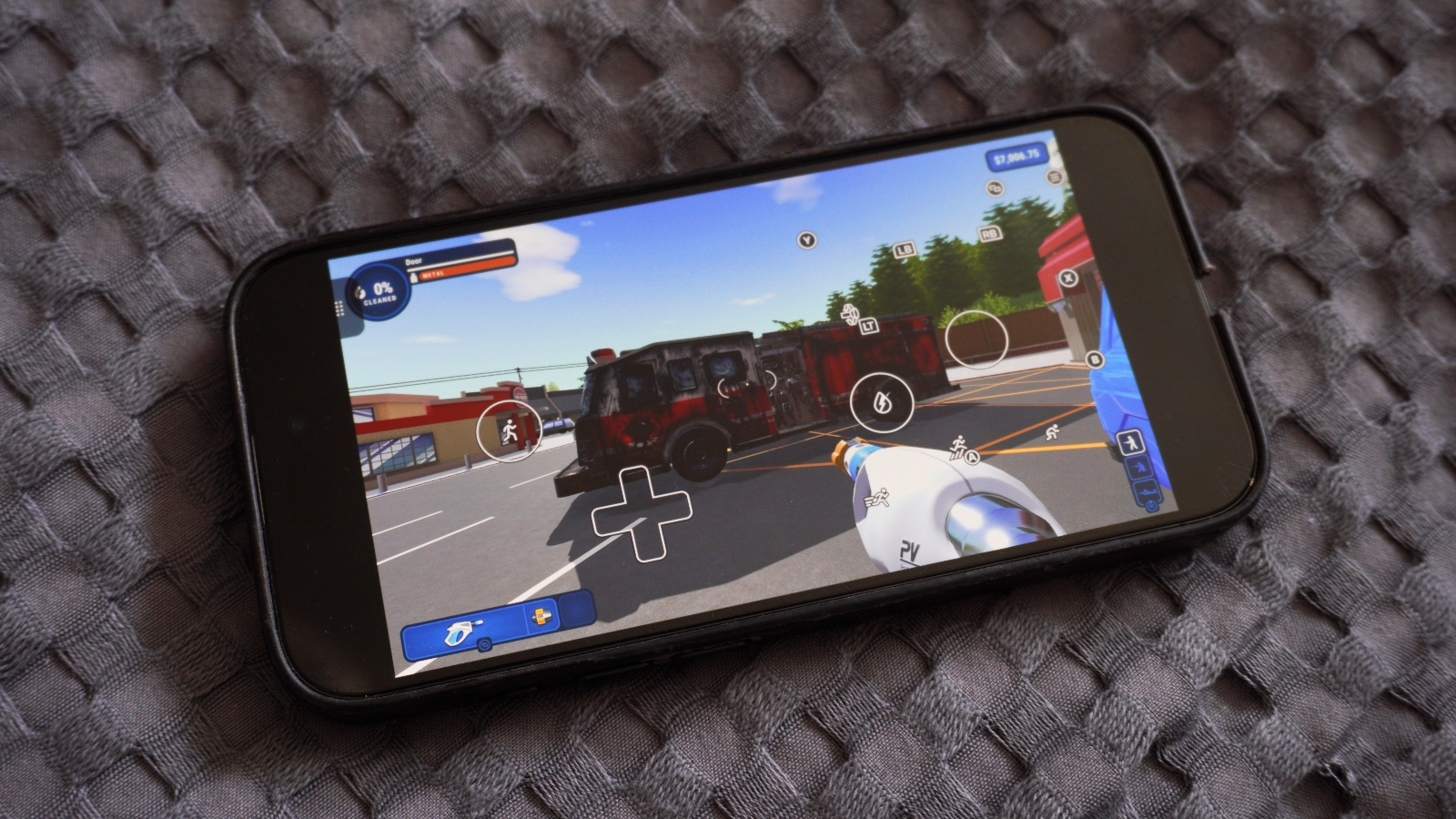
Image: Steve Vegvari | WhistleOut
In all cases, the 200Mbps average speeds I experienced on Bell's network supported the cloud gaming experience. I found minimal lag when out on the 5G network in and around Toronto. There were some dips in bitrate on occasion when I was indoors. However, I found that all games were playable on the 5G connection. Streaming video content across services or even YouTube in 1080p or 4K was a flawless experience. There were no issues across the board, and I could catch up on some of my shows while I was commuting or in the back of an Uber.
Bell versus the competition
As we've covered previously, Bell's pricing model is on the steeper side but provides some additional perks to go along with its 250GB data pool. One of the best ways to compare the carrier to the competition on the market is to look at comparative plans on the market from other major carriers.
By analyzing comparative plans, you can determine the costs that work best for your budget and get a sense of the perks that are most attractive for you. Here are comparative carrier plans, all on a BYOD term.
| Bell Elite 250 100 |
Rogers Ultimate | Telus Complete Explore | Lucky Mobile Data, Talk & Text plan | |||
|---|---|---|---|---|---|---|
| Premium data | 250GB | 250GB | 250GB | 40GB | ||
| High-speed hotspot | Up to 1.7Gbps | 250mbps | 3.8mbps | Up to 150mbps | ||
| Network | 5G+ | 5G | 5G+ | 4G w/ automatic top up | ||
| Additional plan perks | Crave Basic Subscription + One Year Perplexity Pro | 3-months Sportsnet+ | Up to 39% off Stream+ Premium for 6 months | 40GB of bonus data with automatic top-up | ||
| Price | $105/mo. | $100/mo. | $105/mo. | $47/mo. | ||
| View Plan | View Plan | View Plan | View Plan |
When analyzing Bell's most affordable plan against the competition, it's apparent that the carrier is among the most expensive in Canada, hitting $80/month. As shown above, Bell's Elite 100 plan still comes in cheaper than Telus' 5G+ Complete, both of which offer 100GB per month. Then you have Rogers, with its 5G Essentials plan, running on the cheaper side at $70/mo. Lucky Mobile sneaks in with a comparable 100GB at a far cheaper rate. However, its service is limited to 4G connectivity, though the carrier does offer a bonus 10GB when signing up with automatic top-up.
With the Big Three in Canada all providing similar services and pricing in the range of $70 to $80, it's about the details when it comes to how Bell stands out. For instance, Bell has some of the best 5G speeds in Canada, offering up to 1.7Gbps. This is a great benefit for hotspotting off your smartphone if you're working from a cafe, an airport, or anywhere removed from wi-fi. That being said, Bell doesn't have the fastest speeds in general. Telus edges Bell out slightly with up to 2Gbps, but the difference is minimal at best. You also get unlimited Canada-wide calling and texting across all three carriers, so they're all on par with each other.
Bell is at a disadvantage across some of its plans when it comes to streaming. Both the Elite 100 and Elite 175 plans offer SD video streaming, where Rogers and Telus support upwards of 4K video streaming on the network. Seeing as though we're in 2025, 480p video quality just doesn't cut it.
Recap: Would I recommend Bell?
If you're in the market for a new phone plan, I would recommend Bell's Elite 250 plan for several reasons. Regardless of whether you're looking for an off-contract plan or financing a device, the Elite 250 plan provides some real bang for your buck. Supporting a strong and reliable 5G network from coast to coast, many customers in major metro cities can take advantage of the carrier's superior data speeds. This is fantastic for content creators on the go or students who require fast data for school or streaming. Plus, with 250GB of data each month, professionals can feel untethered if working from a coffee shop. The unlimited talk and text perks span Canada, the US, and Mexico are really novel for getting in touch with loved ones or friends in other countries.
With a bit of an edge over its competition, Bell's monthly service costs are more affordable if you are keen to get on a 5G network. I use “affordable” lightly, as $105 is still a good chunk of change out of your wallet each month. The MyBell app is also very intuitive to use and navigate when paying bills or managing your account. While not a unique issue, I do wish Bell's customer service were easier to navigate and speak to. Despite all of this, I'm pretty happy with the time spent under Bell's network this past month.
Steve Vegvari

Steve Vegvari is a 10-year writer in the gaming and tech space, writing for several Canadian publications. He's covered everything from the latest marquee games and hardware to smartphones, smart home devices, TVs, and smart lights. Steve emphasizes his love of weird, experimental tech while uncovering the pros and cons of the Canadian mobile market.
Find Better Phones and Plans
Hundreds of cell phone plans unpacked. All the facts. No surprises.


















